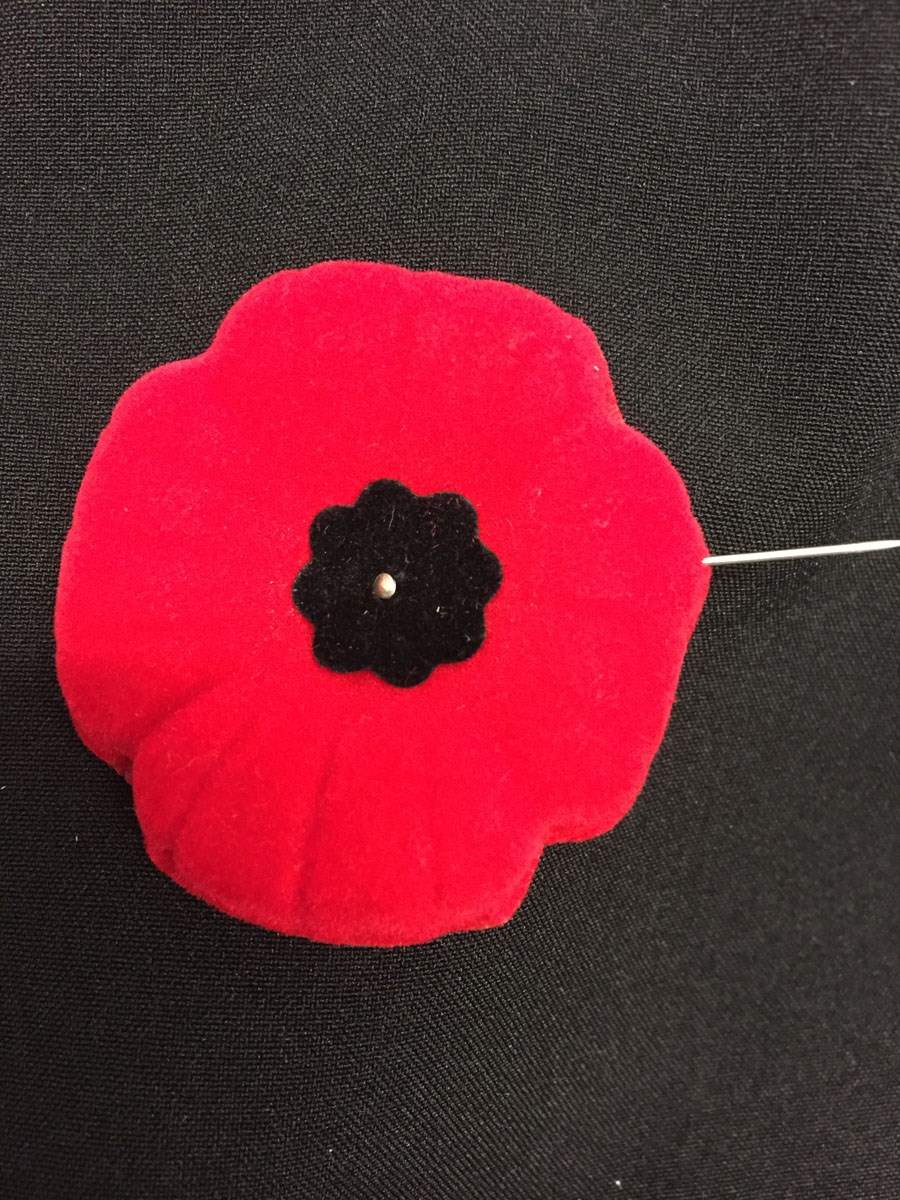�� �� �� �� �� �� “Why do I wear a poppy? Well, it’s never occurred to me not to wear one, because I grew up that way. But, it’s more than that, it’s a small gesture by all of us to take the time to remember and honour the enormous sacrifices of those who serve. We owe them an indescribable debt – one that we can never fully repay – but by wearing a poppy and remembering them, they – and their sacrifices – live forever.” ~ Lynne Bell, reporter, The Observer
���������������������� “I wear a poppy as a way to show my appreciation and thankfulness to those that have offered and continue to offer their lives and livelihoods to serving our country. Because of them I live in a free country; a place where I feel safe. Their sacrifices are ones that not everyone makes and it is important to honour their service.” ~ Kelly Running, editor, The Observer
��
A symbol of remembrance
By Kelly Running
��
���������������������� In the language of flowers, the poppy, stands for consolation, while red is a symbol of passion and love. Thus, wearing a red poppy on Remembrance Day and the week’s leading up to it, are a way to remember those that have given and continue to give their lives in service to our country.
���������������������� World War I, although named The Great War, was devastating. Trench warfare meant that very little territorial advancement was made or lost by either side fighting in the war.
���������������������� The majority of fighting took place in Western Europe, a place which before the war was of lush green grass and a beautiful countryside. The war quickly turned the landscape from a beautiful, serene place to one pockmarked by shells exploding. The land was barren, except for the mud, which had enveloped the no man’s land between the trench lines.
���������������������� Nothing grew except for the fears of being in a war; a war which looked impossible to resolve. A war, which was supposed to be over quickly turned into four years of brutal battle.
���������������������� During the springs of the war the barren land where battles were waged and lives were lost battlefields of bright red flowers – poppies – began sprouting up. The Flanders poppies (Papaver rhoeas), although delicate, are resilient and grew amongst the devastation. The soil had in fact been enriched with lime by the rubble and bomb debris, which made for good growing conditions.
���������������������� For the Canadian doctor, Lt Col John McCrae, he was struck by the poppies, which were growing in a cemetery where his friend had been buried. In May 1915, he had lost a friend at Ypres, and as the poppies grew, blooming a brilliant red he was inspired to write, the now famous poem, “In Flanders Fields.” A poem, which became a representation of the sacrifices servicemen and women give.
���������������������� That poem, which was first published in England’s Punch magazine in December of 1915 inspired an American woman from Georgia, Moina Michael, to wear a poppy year-round in memory of those who lost their lives in the war. She also wrote a reply to “In Flanders Fields” which was called “We Shall Keep the Faith.”
���������������������� In 1920, Anna Guerin of France, visited Michael. Guerin was inspired to sell poppies, handmade by widows of war, as a way to raise money for children affected by war in France.
���������������������� The movement grew and poppies became a symbol of remembrance. In 1921, nine million were ordered by the Royal British Legion, they were all handmade by veterans that year, and were sold on Nov. 11. The next year, following a successful poppy campaign, a poppy factory was established to keep up with demands by Major George Howson. Funds raised were then used to help WW1 veterans with employment and housing.
���������������������� In Canada the Great War Veteran’s Association, the predecessor of the Royal Canadian Legion, adopted the Poppy as its Flower of Remembrance on July 5, 1921.
���������������������� Today, in Canada, the Poppy Campaign begins the last Friday in October. It is worn on the left lapel, or simply near the heart. Many people will wear the poppy until the end of the Remembrance Day ceremony on Nov. 11, where they lay their poppy at the base of the cenotaph in their community as a sign of respect.
���������������������� Funds raised through the Poppy Campaign supports veterans of the Canadian Armed Forces and RCMP, as well as their families.
���������������������� The Poppy Trust Funds are put towards, as stated on the Legion’s website (www.legion.ca):
- Grants for food, heating costs, clothing, prescription medication, medical appliances and equipment, essential home repairs and emergency shelter or assistance
- Housing accommodation and care facilities
- Funding for Veteran Transition Programs that are directly related to the training, education and support needs of Veterans and their families
- Comforts for Veterans and their surviving spouses who are hospitalized and in need
- Veterans visits, transportation, reading programs and day trips
- Accessibility modifications to assist Veterans with disabilities
- Educational bursaries for children, grandchildren and great-grandchildren of Veterans
- Community drop-in centres, meals-on-wheels, and seniors services in communities where Veterans would benefit
- Community medical appliances, medical training and medical research which will assist in the care of Veterans in the community
- Support the work of Legion Command and Branch Service Officers across Canada in assisting and representing Veterans
- Donations for relief of disasters declared by federal or provincial governments which impact Veteran in those communities
���� - Promotion and administering of Remembrance activities to ensure Canadians never ������
������ forget the sacrifices of Canada’s Veterans




